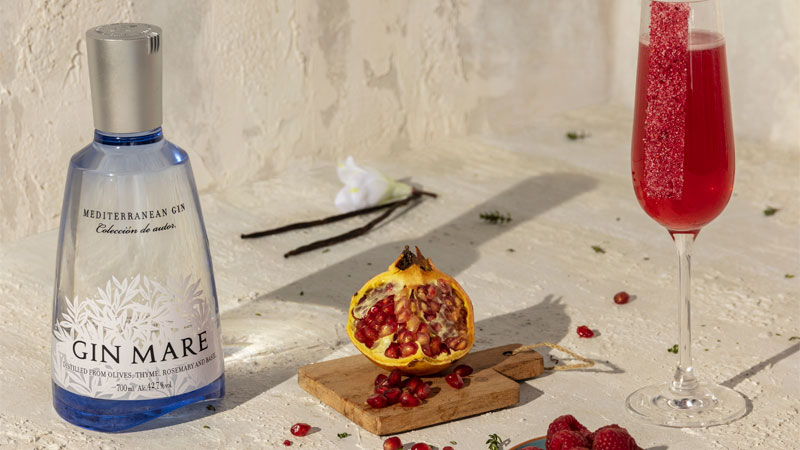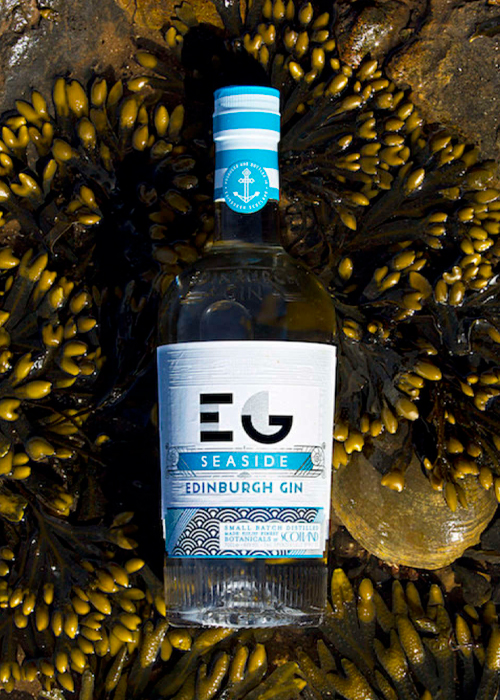Savory cocktails showcasing herbaceous flavors, and even salt or spice, have risen from a niche oddity to a menu mainstay. When combined properly, savory flavors can beautifully complement the other notes we more readily expect in a cocktail, whether sour or sweet. One secret weapon to consistently nailing that nuance down is, of course, savory gin — a far-reaching style of gin with a botanical base already primed for the job.
Savory Gins to Know
Whether stocking your home bar or your professional kit, there’s no shortage of savory gins to choose from. For Natasha Bahrami, a.k.a. The Gin Girl, who is the owner of The Gin Room in St. Louis and the founder of the Ginworld festival, savory gin represents an exciting flashpoint in the growth of gin on the whole. “Savory is one of my favorite categories of gin and [it’s] incredibly versatile,” she says. “Some of the most attractive components I look for with savory is salinity and crispness, though the category is much broader than people realize — piney gins fit under savory as well, for instance.”
Bahrami’s Gin Room menu is broken down into numerous classifications, including a dedicated savory section. One of her current top savory gin picks hails from Italy: Moletto. “It’s this insane gin, distilled from four types of tomatoes,” she says. “It has a savory botanical profile with crisp pepper notes. On the nose you get spaghetti sauce! Then on the palate it’s crisp with salinity.”
One of the most commonly cited and widespread savory gins is Gin Mare. This product from Spain has a botanical base that reads like a Mediterranean cookbook ingredients list, with basil, rosemary, thyme, and Arbequina olives. “Gin Mare is great to enjoy in many ways,” says Josh Murski, the lead bartender at The Bazaar by José Andrés in Beverly Hills. For instance, he suggests keeping it simple with a dirty martini, accentuating the olive already in the gin.
Gin Mare even developed its own mixer, 1724 Tonic, to showcase the gin. With mandarin oil, thin bubble carbonation, and low sugar content, it’s designed to produce a crisp gin and tonic that highlights — rather than hides — the spirit. That’s a good goal regardless of the tonic you select. “We love using a range of different flavored tonic waters for our Spanish-style G&T’s,” says Murski, “but we always measure it out, using the tonic as a modifier instead of covering up the unique flavors of the gin.”

Another suggestion from Bahrami is Edinburgh Gin‘s Seaside. “It’s exceptional, and when you hear words like ‘scurvy grass’ you might be scared away, but you shouldn’t be,” she says. “It doesn’t taste like seaweed, rather it tastes like the attributes of what seaweed has in terms of its influences, including salinity. When you’re in Scotland and smell the air near the sea, you get that in this gin.”
Bahrami also points to Ransom Dry Gin. “Oh my gosh,” she says, “everyone knows the Old Tom from Ransom, but this is wonderful with its salinity and savory notes — it’s one of my most underrated.”
Tips for Savory Cocktails
For mixologist Noel Martin of Rosewater in Houston, working with a savory gin is all about bringing the right herbal flavors into the limelight. “I gravitate toward savory gins when trying to showcase certain herbaceous flavors in a straightforward-style cocktail where fresh herbs and essential fruit oils play a large part in the nose,” she says. “They’re subtle, yet complex enough to let other highlighted flavors shine through in a simple garnish without overpowering the flavor profile, providing a solid foundation to build a complex cocktail upon.”

Murski’s approach is to play off what’s already present in the spirit and find a way to bring it to life with the right accompanying ingredients and garnishes. With a complex starter like savory gin that process may take a bit of experimentation to nail down.
“When it comes to using savory gins in cocktails, our general approach is to accentuate what we love about the base spirit,” Murski says. “We often make gimlets with all of the new gins we try out — just as a starting point. Then we’ll add small amounts of other ingredients to slowly see what works well with this particular gin.” He says it can be anything from thyme or ginger to cucumber.
One mainstay on The Bazaar’s menu is the Herbs and Honey, a sour cocktail made with Gin Mare, Chartreuse, honey, lime, lemon, and sugar. “The prevalent botanicals,” says Murski, “are accentuated further at the last step with a pinch of finely ground juniper on top of the egg-white foam for extra aromas.”
Bahrami was experimenting with French 75 riffs when she found a new go-to usage for Moletto. She deployed the Italian tomato gin with sparkling wine, Suze, and lemon juice for a new customer favorite with an unexpected combination of winning flavors.
Martin says her favorite savory-gin-based cocktail is the Marlow. “A somewhat simple drink with Gin Mare, Chareau aloe liqueur, pineapple gomme, and lemon,” she says, “it’s quick, complex, refreshing, and a crowd pleaser.” Martin has also played around with a unique Gibson variation called the Waxing Gibson, which, she says, “aimed to please the NASA crowd.” She makes it with Gin Mare, dry vermouth, smoked sea salt and black pepper tincture, and black truffle oil. “I soak the cocktail onion in truffle oil as well and dip it in mushroom dust to mimic a waxing gibbous moon phase,” she says.
Savory gins are made in an array of styles, from simple and clean to bold, rich, and flavorful. While they’re an ideal base spirit for many savory cocktails, don’t feel boxed in when using them. “Savory gins aren’t necessarily — or only — for savory cocktails,” says Bahrami. They can enhance cocktails across the spectrum, so continue exploring and see which direction the botanicals of any particular gin take you.
